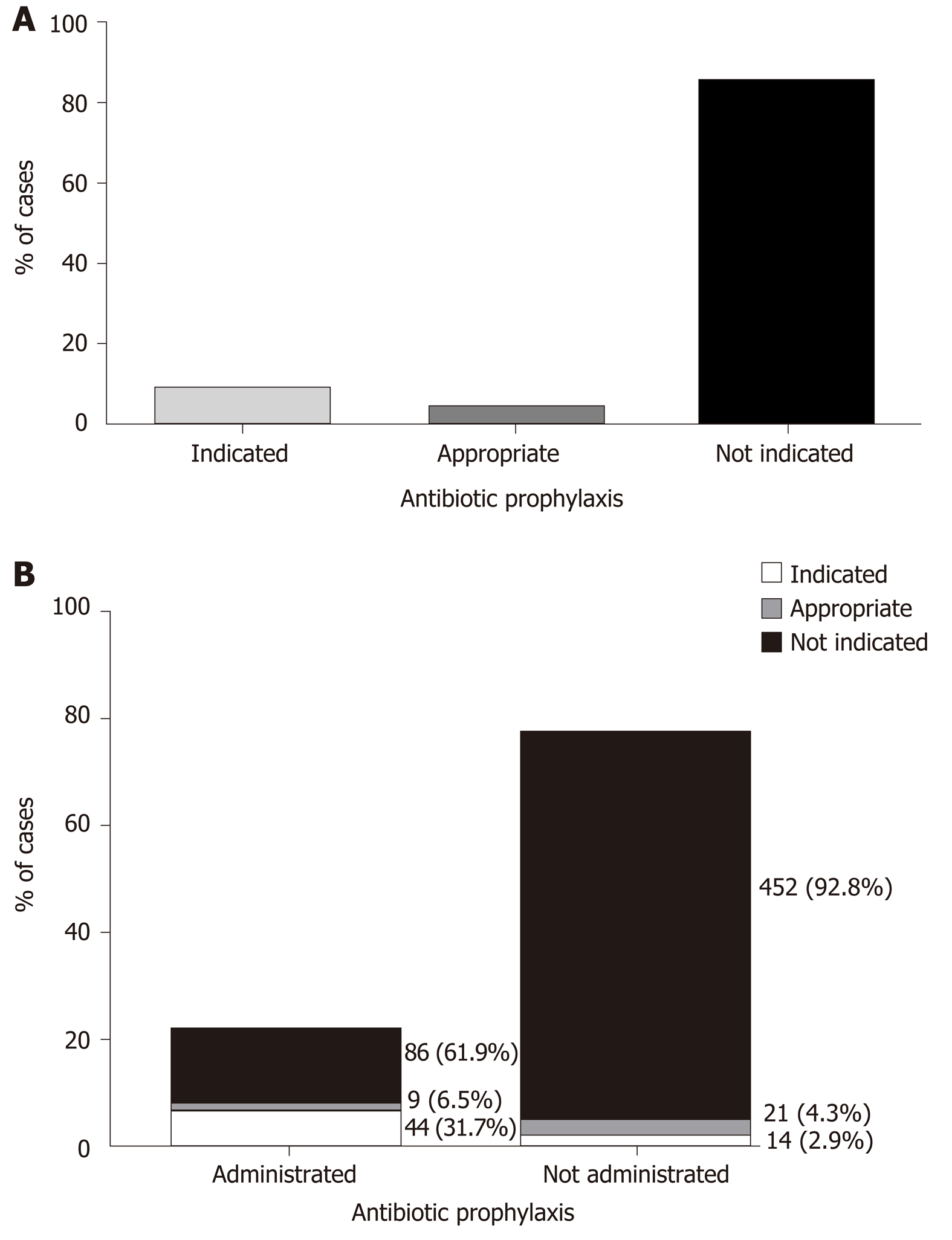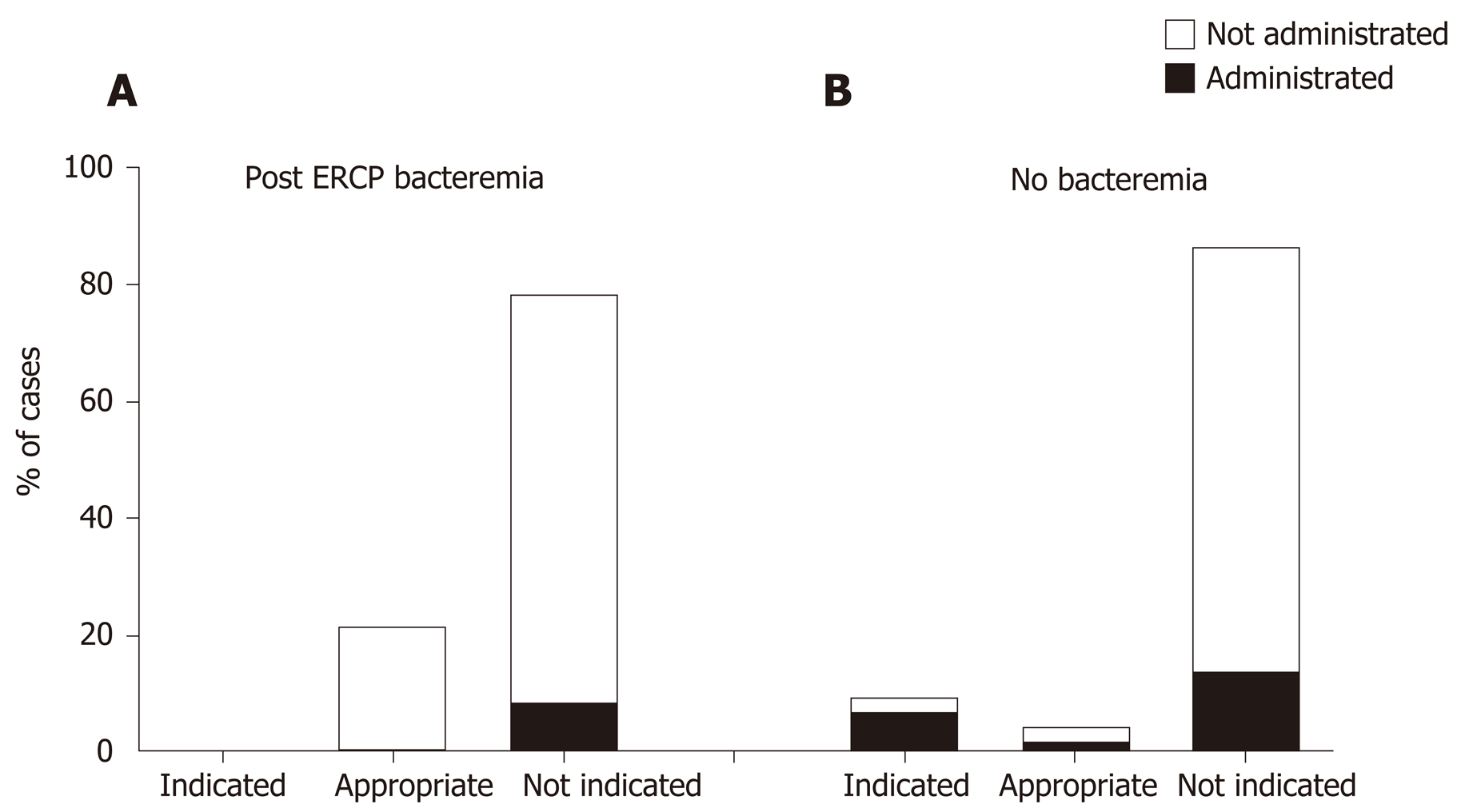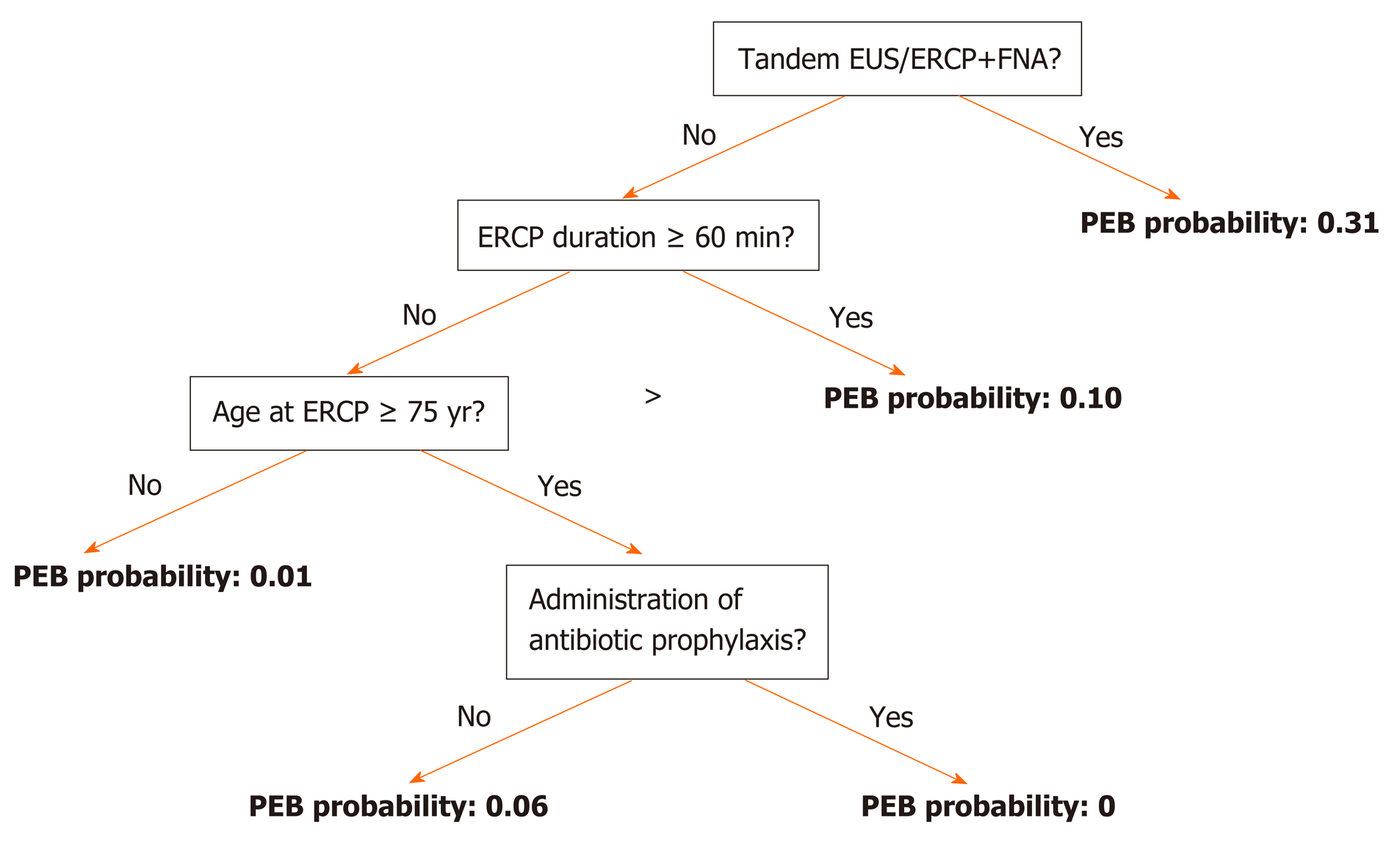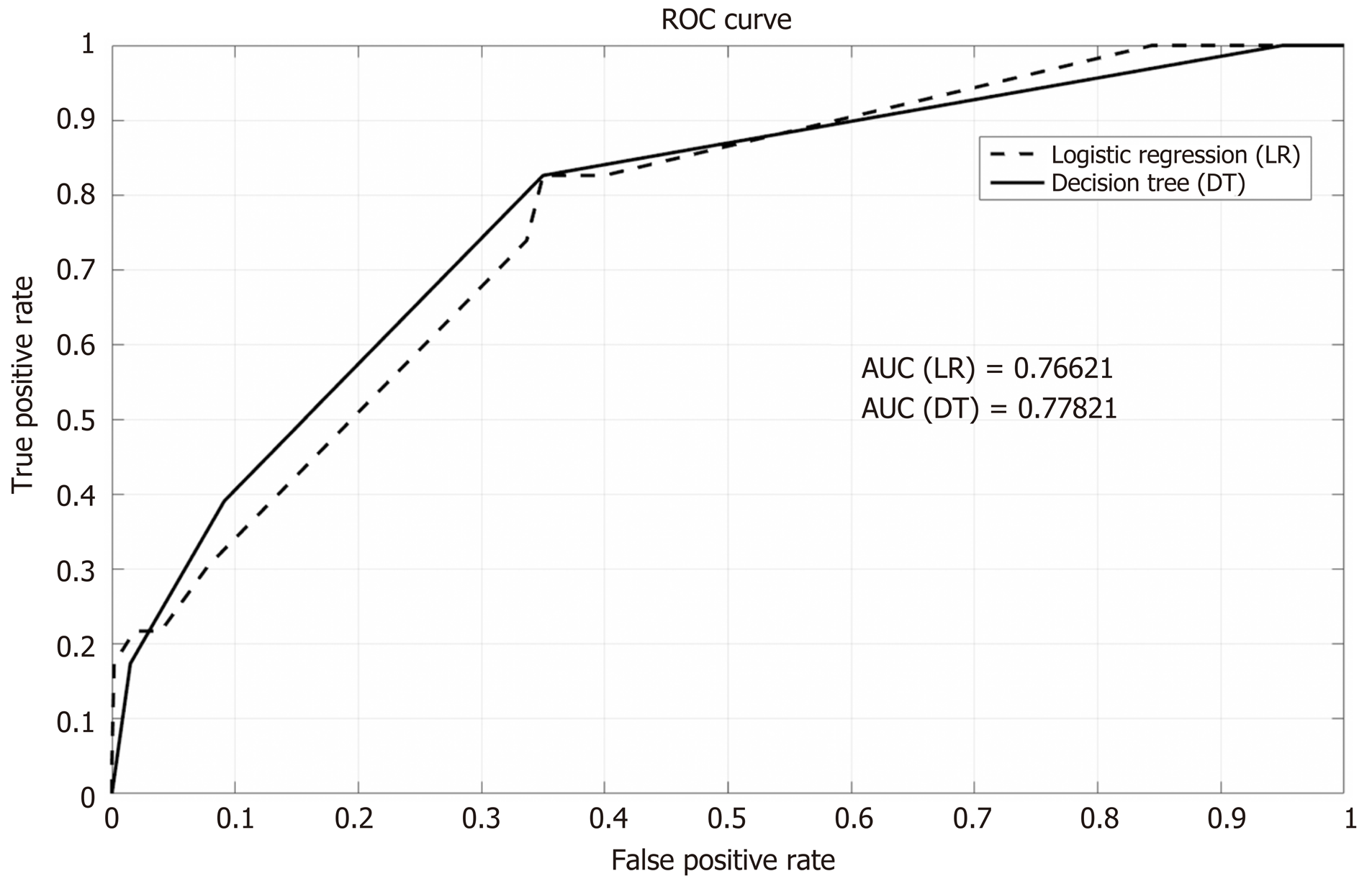Copyright
©The Author(s) 2020.
World J Gastroenterol. Nov 7, 2020; 26(41): 6402-6413
Published online Nov 7, 2020. doi: 10.3748/wjg.v26.i41.6402
Published online Nov 7, 2020. doi: 10.3748/wjg.v26.i41.6402
Figure 1 Study flow chart.
PEB: Post endoscopic retrograde cholangiopancreatography bacteremia; ERCP: Endoscopic retrograde cholangiopancreatography.
Figure 2 Bacterial type's dispersion among entire cohort and according to the days past endoscopic retrograde cholan-giopancreatography date.
A: Bacterial type's dispersion among entire cohort; B: Bacterial type's according to the days past endoscopic retrograde cholangiopancreatography date. ERCP: Endoscopic retrograde cholangiopancreatography; ESBL: Extended spectrum beta-lactamase.
Figure 3 Appropriateness of antibiotic administration.
A: Categorization of antibiotic prophylaxis appropriateness according to ASGE guidelines; B: Sub-categorization of prophylaxis appropriateness among cases who were actually administrated with antibiotics and those who were not.
Figure 4 Sub-categorization of prophylaxis administration in each category of prophylaxis appropriateness among cases with or without post endoscopic retrograde cholangiopancreatography bacteremia.
ERCP: Endoscopic retrograde cholangiopancreatography.
Figure 5 Decision tree model for the outcome of post endoscopic retrograde cholangiopancreatography bacteremia.
PEB: Post endoscopic retrograde cholangiopancreatography bacteremia. ERCP: Endoscopic retrograde cholangiopancreatography; EUS: Endoscopic ultrasound; FNA: Fine needle aspiration.
Figure 6 Receiver operating characteristic curves of the logistic regression model (broken line, AUC, 0.
766) and the decision tree model (continuous line, AUC, 0.778). ROC: Receiver operating characteristic.
- Citation: Deutsch L, Matalon S, Phillips A, Leshno M, Shibolet O, Santo E. Older age, longer procedures and tandem endoscopic-ultrasound as risk factors for post-endoscopic retrograde cholangiopancreatography bacteremia. World J Gastroenterol 2020; 26(41): 6402-6413
- URL: https://www.wjgnet.com/1007-9327/full/v26/i41/6402.htm
- DOI: https://dx.doi.org/10.3748/wjg.v26.i41.6402














